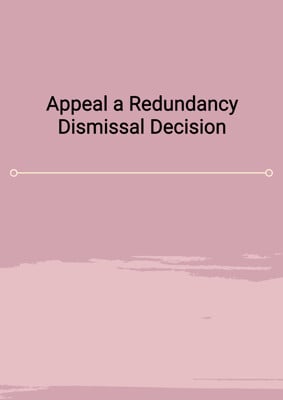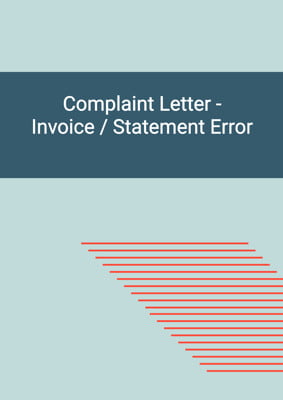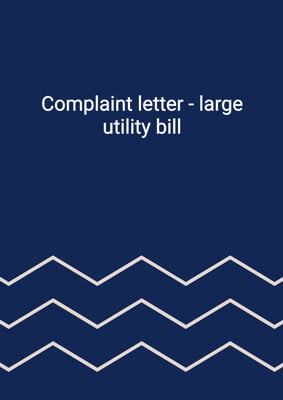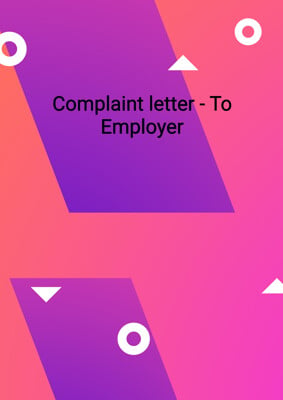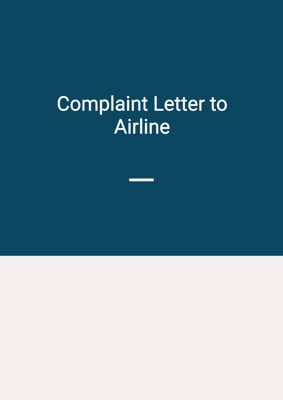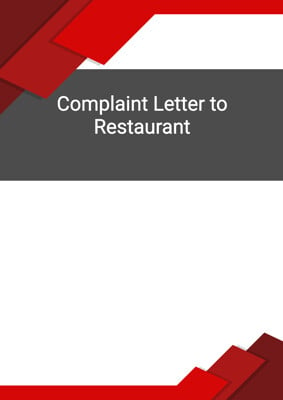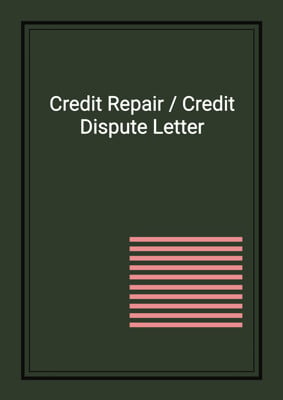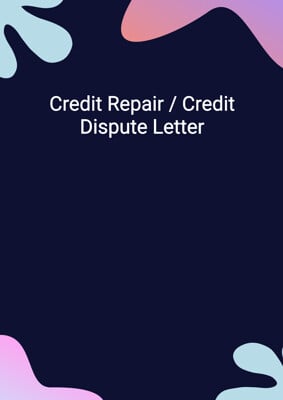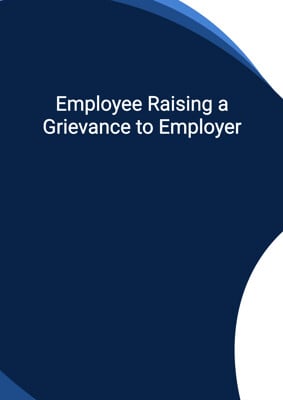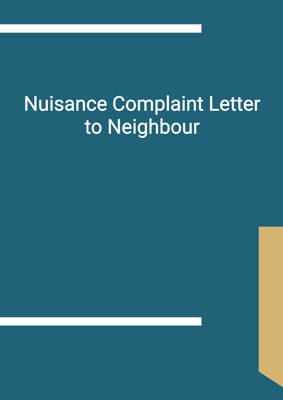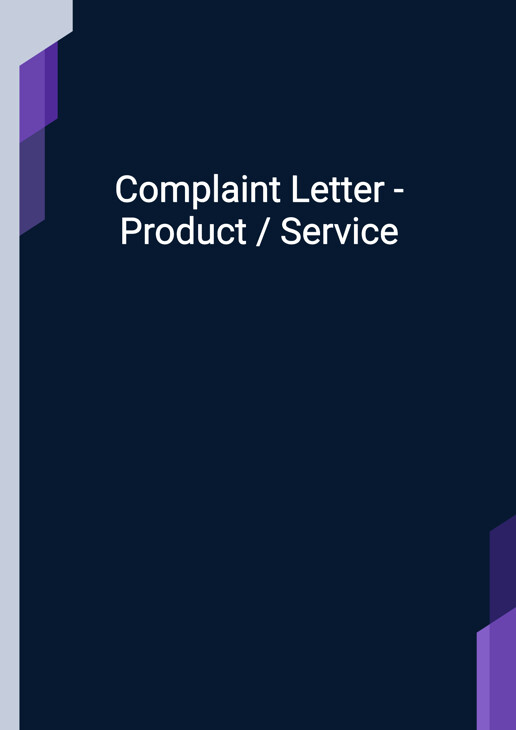
Complaint Letter - Product / Service
Misleading Promotion
An email or letter of complaint to the seller regarding the purchase of a product resulting from a misleading promotion. It requests for urgent action regarding the provision of the value of the promotion / full refund of the product and set a deadline for remediation.
How to Tailor the Document for Your Need?
01
Create Document
Click "Create Document" button and the document will be prepared with your account details automatically filled in.
02
Fill Information
Please fill in any additional information by following the step-by-step guide on the left hand side of the preview document and click the "Next" button.
03
Get Document
When you are done, click the "Get Document" button and you can download the document in Word or PDF format.
04
Review Document
Please review the document carefully and make any final modifications to ensure that the details are correct before sending to the addressee.
Document Preview
Document Description
The document titled 'Complaint Letter - Product / Service' is a formal letter written by a customer to express dissatisfaction with a purchased product or service. The letter serves as a means for the customer to communicate their complaints and seek a resolution from the recipient, who could be the seller, service provider, or a relevant authority.
The importance of this document lies in its ability to provide a structured and documented account of the customer's grievances. It allows the customer to clearly articulate their concerns, provide supporting evidence, and request appropriate action to rectify the situation. Additionally, the complaint letter serves as a record of communication that can be used for legal purposes or to escalate the matter if necessary.
The document consists of several sections, each serving a specific purpose:
1. Account Information: The letter begins with the customer's account details, including their first and last name, address, and contact information. This information ensures proper identification and contact for further correspondence.
2. Recipient Information: The letter is addressed to the recipient, typically an individual or organization responsible for the product or service in question. The recipient's name, title, and address are included to ensure the letter reaches the appropriate party.
3. Introduction: The introduction section provides context for the complaint by stating the date of the purchase and the transaction details. It highlights the customer's reliance on a promotional offer that influenced their decision to buy the product.
4. Complaint Details: This section varies based on the specific complaint. It includes conditional statements that address different scenarios, such as difficulties in claiming the promotion, misleading promotions, being informed after purchase about ineligibility for the promotion, or receiving a faulty product. The customer explains the problem they encountered in each case.
5. Desired Resolution: The customer states their desired outcome, which could be a full refund for the product or the value of the promotion as promised. The choice depends on the specific circumstances and the customer's preferences.
6. Consequences and Timeframe: The customer expresses their intention to complain online and to consumer councils if the issue is not resolved satisfactorily. They emphasize the time wasted in attempting to claim the promotion and enclose copies of relevant records. The customer sets a deadline for a response before seeking third-party assistance.
7. Closing: The letter concludes with a polite closing, reiterating the customer's expectation of a resolution and providing contact information for further communication.
Overall, the document serves as a formal means for customers to voice their complaints and seek appropriate action. It provides a detailed account of the issue, supporting evidence, and a clear request for resolution.
How to use this document?
Guidance for using the 'Complaint Letter - Product / Service' document:
1. Gather Account Information: Collect your account details, including your first and last name, address, and contact information. Ensure accuracy and completeness.
2. Identify the Recipient: Determine the appropriate recipient of the complaint letter. This could be the seller, service provider, or a relevant authority. Obtain the recipient's name, title, and address for accurate addressing.
3. Introduce the Purchase: Begin the letter by stating the date of the purchase and the transaction details. Provide relevant information to establish the context of the complaint.
4. Explain the Complaint: Clearly describe the nature of your complaint. Use conditional statements to address different scenarios, such as difficulties in claiming the promotion, misleading promotions, being informed after purchase about ineligibility for the promotion, or receiving a faulty product. Provide specific details and supporting evidence.
5. State Desired Resolution: Clearly state your desired outcome. Decide whether you want a full refund for the product or the value of the promotion as promised. Consider the specific circumstances and your preferences.
6. Highlight Consequences and Timeframe: Emphasize the consequences of not resolving the issue satisfactorily. Mention your intention to complain online and to consumer councils. State the time wasted in attempting to claim the promotion and enclose copies of relevant records. Set a deadline for a response before seeking third-party assistance.
7. Close Politely: Conclude the letter with a polite closing, expressing your expectation of a resolution. Provide your contact information for further communication.
Note: Adapt the content of the letter to suit your specific complaint and circumstances. Ensure clarity, accuracy, and professionalism in your communication.
Not the right document?
Don’t worry, we have thousands of documents for you to choose from:

